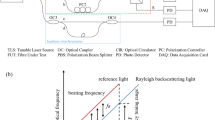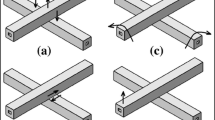Abstract
The floating production, storage and offloading units (FPSO) being generally in a tropical area, makes corrosion a fundamental ageing problem of these steel structures. Therefore, there is a strong need for proposing repair solutions having low impact on their exploitation. The owner of these units are highly interested in the development of “cold repair” in contrast with “hot works” which require to stop the production for security risks, like adhesively bonded FRP (Fibre Reinforced Polymer) patch which requires additional development, in particular in the design step. The design of these reinforcements needs a complete understanding of the mechanical state of the patch which is based on the different materials and interfaces properties. Fracture mechanics seems an interesting option to express the mechanical state of the patch and more particularly the risk to undergo interlaminar fracture or steel interface debonding failure before materials failure. The experimental definition of the required design values for such an approach (critical toughnesses) are generally obtained with common tests such as DCB (Double cantilever beam) or ENF (End notch flexure) tests.
The presented study is focused on the determination of the critical toughness in mode II through ENF (End Notched Flexure) test which can be done following some standards, such as ASTM D7905. A distributed optical fibre was used to verify the correct determination of the initial crack length, to determine the crack propagation during the test, and to monitor the fracture process zone length. The currently used methods, such as visual observation or Digital Image Correlation (DIC) of the crack front at the border of the sample, may indeed induce error if the crack is not straight. To compare these methods, the realized test was monitored using a distributed optical fibre placed in the centre of the lap width, in and on the specimen. Firstly, the issues related to the integration of this continuous optical fibre will be raised (insertion, precision resolution, measurement noise). Then, some experimental investigations will be described presenting different monitoring strategies using continuous optical fibre measurement and Digital Image Correlation technique (DIC). The obtained results will be analyzed focusing on the proper determination of the critical toughness of the adhesive. This will then be used to design and optimize the monitoring strategy of a wider experimental campaign.
Access this chapter
Tax calculation will be finalised at checkout
Purchases are for personal use only
Similar content being viewed by others
References
Allix O, Ladeveze P, Corigliano A (1995) Damage analysis of interlaminar fracture specimens. Compos Struct 31:61–74
Ramaré O (2009) An overview. In: Ramana DS (ed) Arithmetical Aspects of the Large Sieve Inequality. Hindustan Book Agency, Gurgaon, pp 119–120. https://doi.org/10.1007/978-93-86279-40-8_15
D7905 (2014) Standard test method for determination of the mode II interlaminar fracture toughness of unidirectional fiber-reinforced polymer matrix composites. West Conshohocken, PA: ASTM International
Davies P (2001) Fracture Mechanics Testing Methods for Polymers, Adhesives and Composites, Adhesives and Composites, Chapter: Introduction to delamination fracture of continuous fibre composites Elsevier. Science 28:271–275
Girolamo D, Dávila C, Leone F, Lin S-Y (2015) Cohesive Laws and Progressive Damage Analysis of Composite Bonded Joints, a Combined Numerical/Experimental Approach. 56th AIAA/ASCE/AHS/ASC Structures. Structural Dynamics, and Materials Conference
Guo H, Xiao G, Mrad N, Yao J (2011) Fiber optic sensors for structural health monitoring of air platforms. Sensors (Basel, Switzerland). 11:687–705
Kanninen MF (1985) Advanced Fracture Mechanics. Oxford University Press
Leffler K, Alfredsson S, Stigh, U (2006) Shear behaviour of adhesive layers. International Journal of Solids and Structures - INT J SOLIDS STRUCT. 44
LUNA. OdisiB (2020). http://lunainc.com
Meadows L et al (2017) Distributed optical sensing in composite laminates. The Journal of Strain Analysis for Engineering Design. 52
Murayama H, Kageyama K, Uzawa K, Ohara K, Igawa H (2011) Strain monitoring of a single-lap joint with embedded fiber-optic distributed sensors. Struct Health Monit 11:325–344
Tsokanas P, Loutas T, Kostopoulos V, Essa Y, Escalera F (2018) On the design and analysis of interlaminar fracture toughness tests on dissimilar metal-composite adhesive joints with residual thermal stresses. In: Conference: ECCM18, 18th European Conference on Composite MaterialsAt: Athens, Greece
Rice J (1968) A path independent integral and the approximate analysis of strain concentration by notched and cracks. J Appl Mech. 35
Samiec D (2012) Distributed Fibre-Optics Temperature and Strain Measurement with Extremely High Spatial Resolution: Photonik International. 1:10–13
Author information
Authors and Affiliations
Corresponding author
Editor information
Editors and Affiliations
Rights and permissions
Copyright information
© 2022 The Author(s), under exclusive license to Springer Nature Switzerland AG
About this paper
Cite this paper
Sourisseau, Q., Lepretre, E., Chaitaigner, S., Chapeleau, X., Mouton, L., Paboeuf, S. (2022). Use of Distributed Optical Fibre to Monitor the Crack Propagation of an Adhesively Bonded Joint During an ENF Test. In: Ilki, A., Ispir, M., Inci, P. (eds) 10th International Conference on FRP Composites in Civil Engineering. CICE 2021. Lecture Notes in Civil Engineering, vol 198. Springer, Cham. https://doi.org/10.1007/978-3-030-88166-5_21
Download citation
DOI: https://doi.org/10.1007/978-3-030-88166-5_21
Published:
Publisher Name: Springer, Cham
Print ISBN: 978-3-030-88165-8
Online ISBN: 978-3-030-88166-5
eBook Packages: EngineeringEngineering (R0)




